V2G (Vehicle-to-Grid) and V2L (Vehicle-to-Load) charging are technologies that allow electric vehicles (EV) to play an active role in energy management in addition to their major function as a means of transport. These technologies are beneficial for the environment as they contribute to reducing dependence on fossil fuels and optimising the use of electrical energy.
How V2G (Vehicle-to-Grid) works
Bidirectional, or two-way, charging (often abbreviated to V2G) for electric vehicles is a technology that not only powers up an EV battery from an energy source, but also exports the electrical energy of an EV battery back into the grid or electrical appliances. This means an EV’s battery can be used to store bidirectional energy.
Here’s how bidirectional charging works:
- Charging an electric vehicle: When you plug in your EV to charge, it is usually powered up from the electricity on the grid.
- Energy supply: Once your EV is fully charged, it may be necessary to restore electrical power back to the grid. This can stabilise the grid during peak periods and provide renewable energy when demand is high.
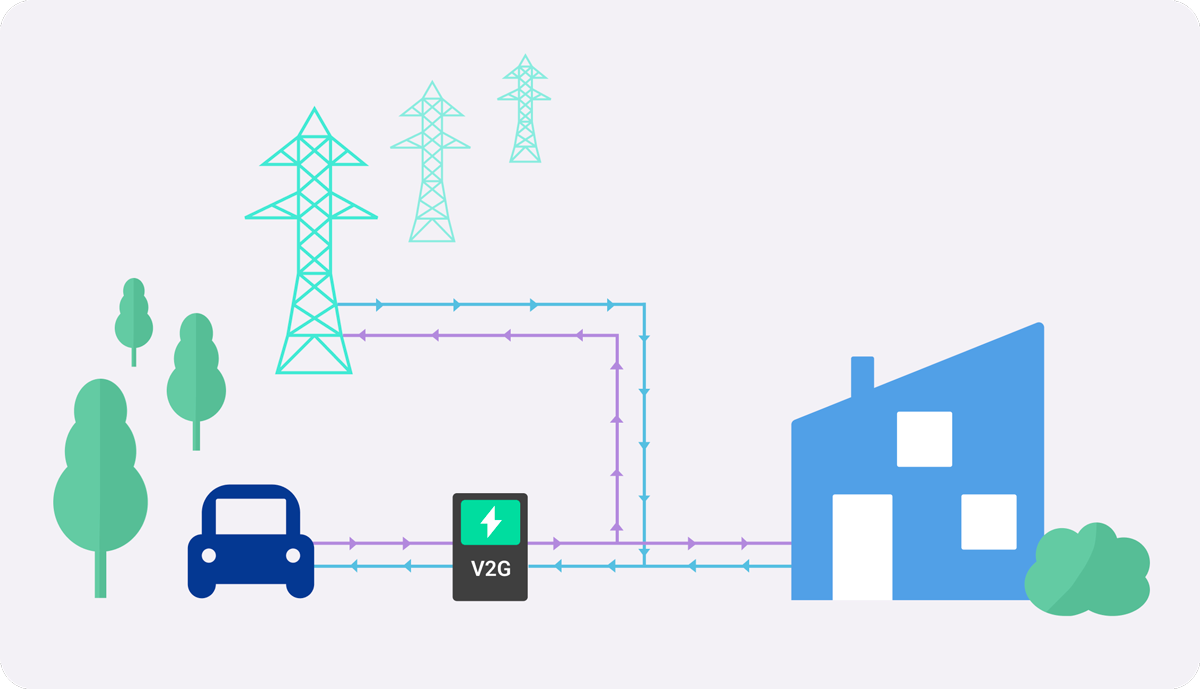
Bidirectional charging offers many advantages:
- Stabilising the power grid: in periods of high demand, EVs connected in V2G mode can supply electricity to the grid, thereby helping to balance supply and demand in terms of electrical power. This can help avoid power outages.
- Using renewable electricity: you can store the renewable electrical energy generated by your EV when you are not driving it and re-use it as the need arises, thereby contributing to maximising the use of clean energy.
- Reducing costs: by selling surplus energy back to the grid, you can potentially reduce your energy costs and even earn a bit of money.
- Back-up power in the event of an outage: with bidirectional charging, your EV battery can be used as an emergency back-up supply if you have a power outage at home or on a worksite.
However, it should be noted that bidirectional charging requires specific equipment, including bidirectional chargers and EVs that are compatible with this technology. Not all EVs are equipped for V2G, so before investing in this technology, make sure your vehicle is compatible and consult the options available for bidirectional charging in your region.
How V2L (Vehicle-to-Load) works
The concept of V2L refers to the capability of an electric vehicle (EV) to supply electricity to external loads and electrical appliances by using the energy stored in the battery. Unlike V2G (Vehicle-to-Grid), where energy is exported to the grid, V2L means your EV can be used as a power source for devices external to your EV, such as electrical appliances, tools, camping lights, laptops and even other electric vehicles.
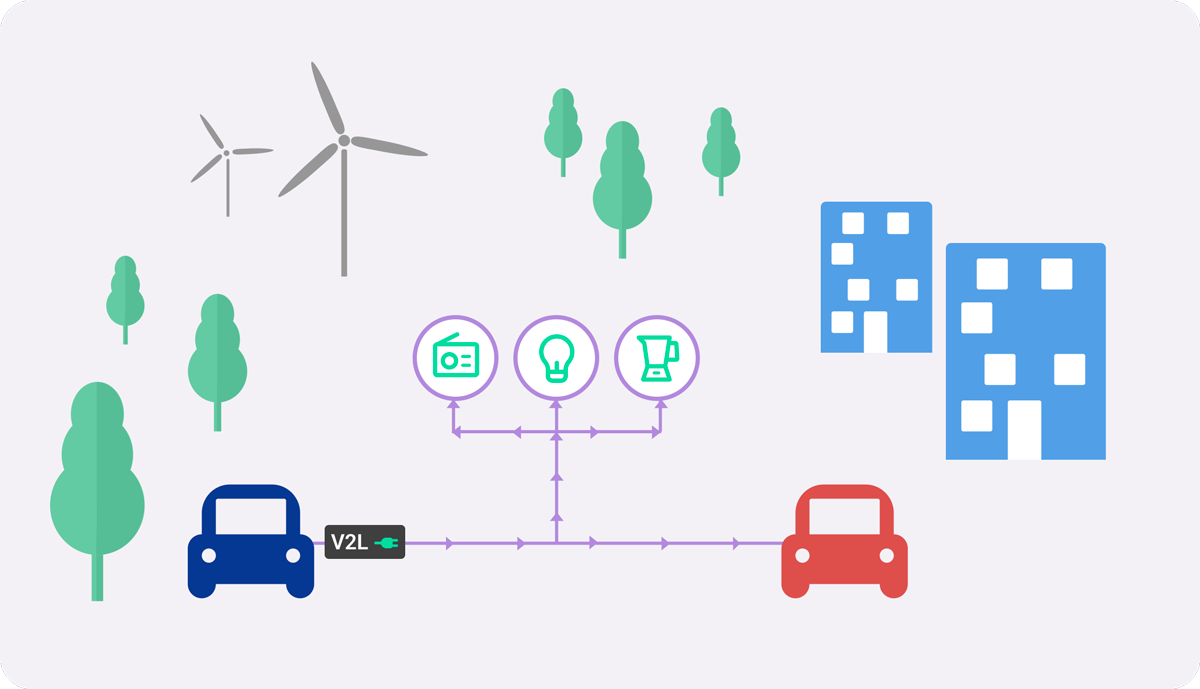
Here is how V2L charging works:
- Powering electrical appliances: EVs equipped with V2L technology are fitted with built-in ports or specific adaptors. You can plug electrical appliances such as fridges, laptops and tools directly into your EV to power them.
- Emergency back-up: in the event of a power outage at your home or on a worksite, your EV can be used as a back-up power source.
- Mobile power supply: V2L can also be used when you are out and about, for example when camping, on picnics or at building sites where you can plug tools and devices directly into your EV and use it as a mobile energy source.
- Efficient use of renewable energy: If your EV is charged using renewable energy (solar or wind-powered), V2L means you can use this clean energy to power your appliances, thereby contributing to reducing your carbon footprint.
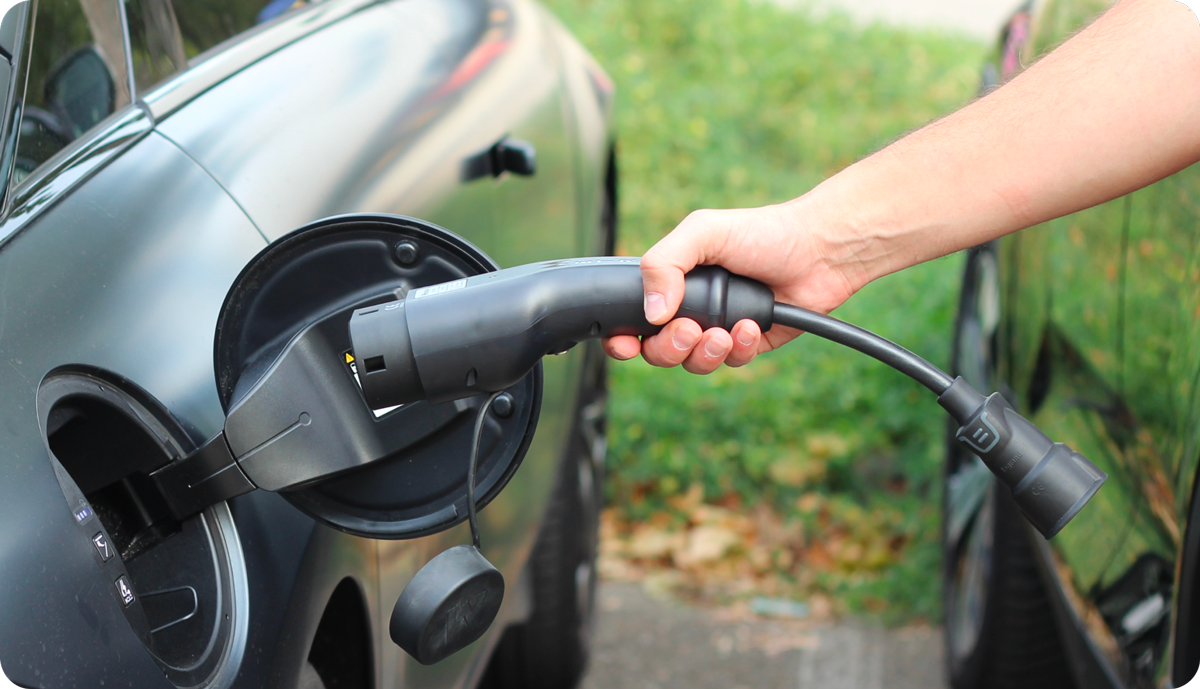
V2L provides you with increased flexibility when using the energy stored in the battery of your EV. This can be particularly useful in the case of emergencies or when you need a mobile energy source. However, the quantity of power available depends on your EV’s battery capacity. You should therefore manage the use of electrical power carefully so as not to run the battery down completely and compromise your mobility.

How to use V2G and V2L
→ Checking you’re compatible
Make sure your EV is compatible with V2G and V2L technology. Not all electric vehicles are equipped with these options, so check up with your EV carmaker.
Here is a list of EVs that are compatible with V2G at the present time:
Tesla had announced its intention to explore V2G in the past, but this option is not yet broadly available to Tesla owners. DIY solutions are proposed by extraneous dealers to enable V2G capability on certain Tesla models.
Beyond carmakers, various projects and R&D initiatives worldwide are currently testing V2G technology on different EV models. The aim behind these projects is to demonstrate the feasibility and advantages of V2G.
It should be noted that the availability of V2G technology may be limited and often depends on the charging infrastructure.
V2L technology is becoming more accessible, but nonetheless remains poorly developed today. Here is the list of electric vehicles equipped with V2L:
- MG 4
- MG 5
- MG EHS
- MG Marvel R
- MG ZS EV
- Kia EV6
- Kia Niro EV
- Hyundai Ioniq 5
- Nissan Ariya
- Mitsubishi Outlander PHEV
Other models are taking this route. V2L technology is gaining in popularity and ever more carmakers are considering integrating this option in their future models.
→ Having the right equipment
Installing a bidirectional charger for V2G
To use V2G, you need a bidirectional charger, also called a V2G charger. This charger is the interface between your EV and the grid enabling you to export electrical energy back to the grid. You can programme your EV charging so that it coincides with peak power demand. This will maximise your contribution to stabilising the grid. V2G chargers are still fairly rare on the market, but this will change in the near future considering the benefits the technology provides.
Using a compatible V2L adaptor
If you own an electric vehicle equipped with V2L technology, this usually means you need to purchase a V2L adaptor that is compatible with your vehicle. This technology is very recent and no universal V2L adaptor is available as yet. This is why you need to be careful when purchasing your adaptor to make sure it is compatible with your EV model.
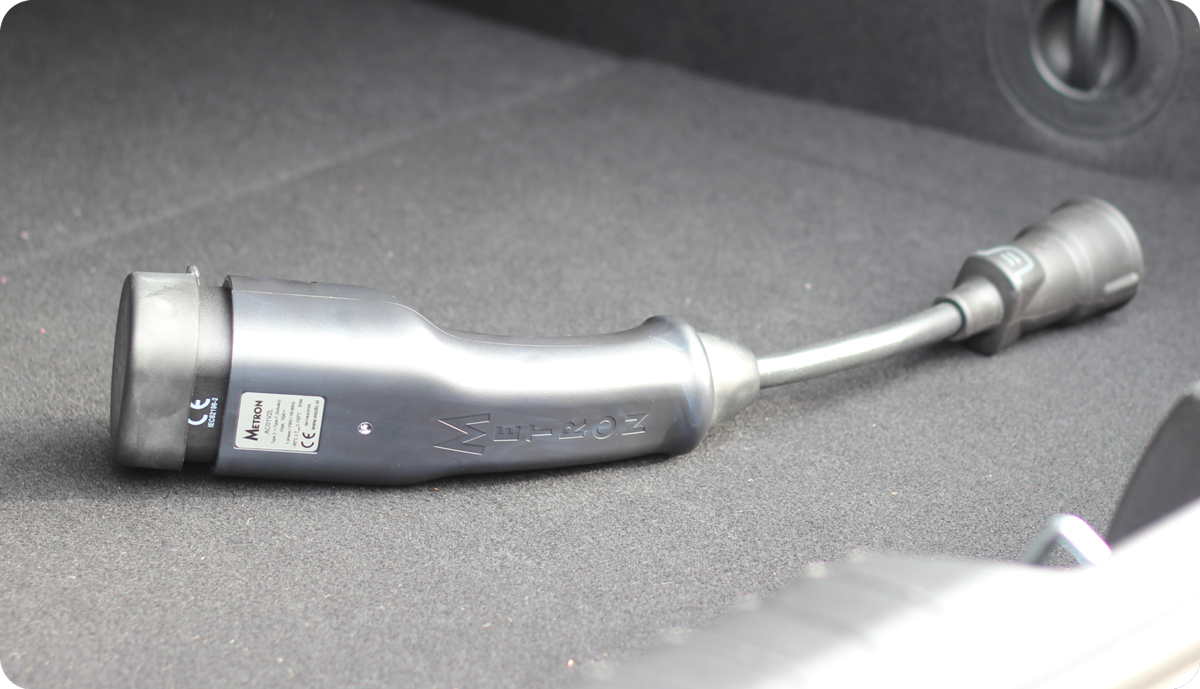
💡V2L adaptors are not compatible with all vehicles due to design differences in terms of connectivity, voltage, safety standards and EV battery capacity.
The adaptor consists of a Type 2 vehicle connector at one end and a simple socket or multi-way socket at the other. So all you have to do is plug in your appliance and follow the carmaker’s instructions to launch V2L.
With a V2L adaptor, you can power electrical appliances (vacuum cleaner, toaster, electric scooter etc.) or even another electric car. But make sure you don’t run the battery down completely or you will compromise your mobility.
The benefits of V2G and V2L
You’ve got the message – the main advantage of V2G and V2L is to use the energy stored in an EV battery more effectively. With these two technologies, you can maximise the advantages linked to your EV’s energy storage capacity.
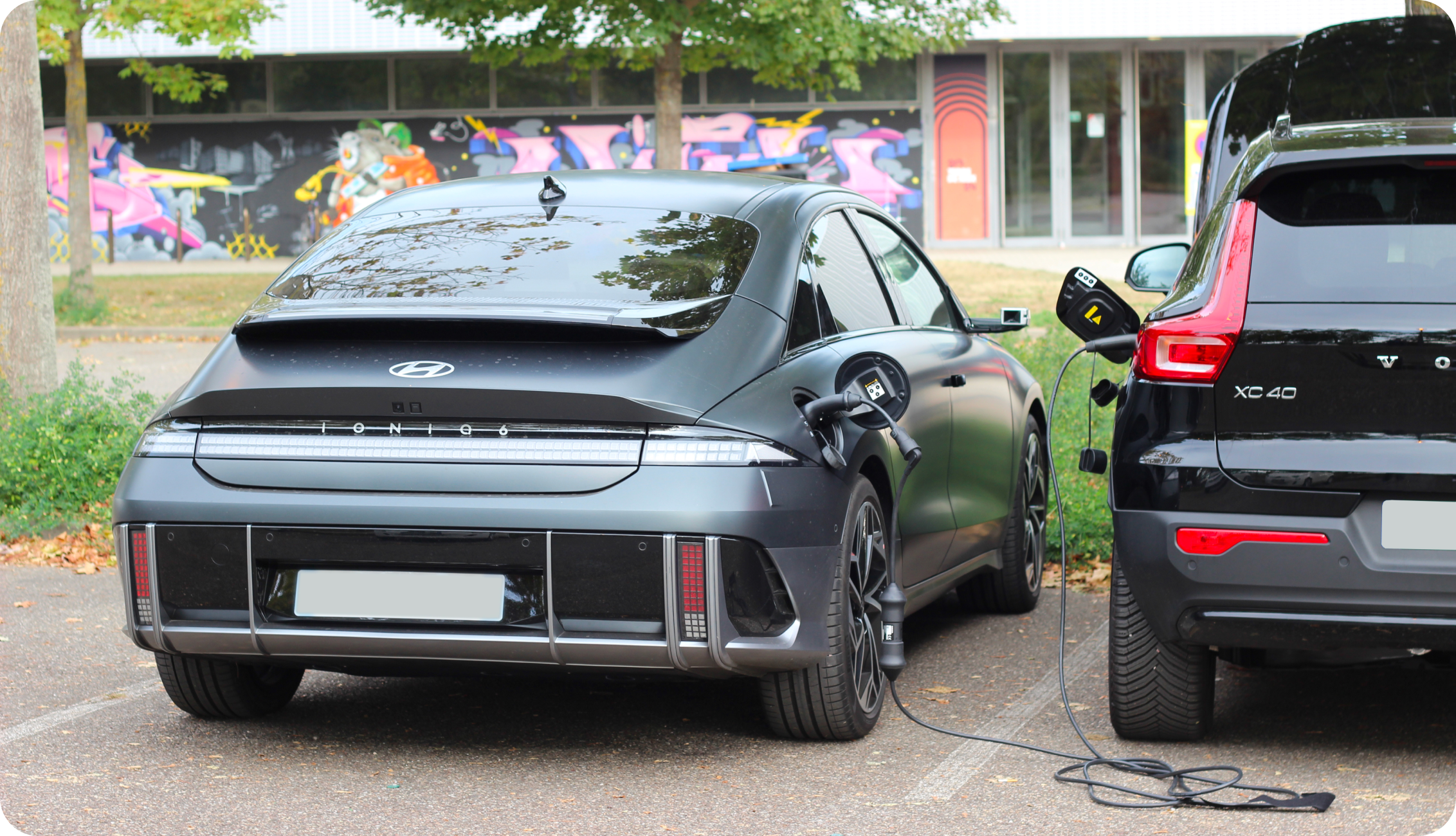
For both V2G and V2L, the major asset of these technologies lies in the fact that you don’t have to depend entirely on the grid since you can supply a new source of energy.
- Optimising renewable energy: V2G and V2L both open the gateway to using renewable energy in a more efficient way. EVs can be charged with electrical power stemming from renewable sources such as solar or wind-powered energy. This energy can then be used to power electrical appliances (V2L) or exported to the grid (V2G) when demand is high. This contributes to maximising the use of clean energy and reducing dependence on non-renewable energy sources.
- Managing demand for electricity: both technologies can also contribute to managing demand for electricity. At peak periods, electric vehicles can help supply electricity to the grid (V2G) or power external loads (V2L), thereby reducing pressure on the grid. This can contribute to stabilising the grid and avoiding power outages.
The two technologies help balance out electrical supply and demand and reduce energy costs. - Back-up in the event of an outage: both technologies provide emergency back-up in the event of a power outage. By using V2G or V2L, the EV battery may be used as a source of back-up power for EVs, homes, businesses and worksites if required.
- Reduction in carbon emissions: By fostering the use of clean electricity, V2G and V2L contribute to reducing greenhouse gas emissions.
To conclude, V2G and V2L are two exciting technologies which exploit the potential of electric vehicles beyond their role as a means of transport. V2G means electric vehicles to play an active role in energy management by supplying electricity to the grid, thereby contributing to its stability in the event of power outages. And V2L offers exceptional flexibility by enabling EVs to power external appliances and act as a source of back-up energy supply in the event of a power outage.
Furthermore, these technologies are environment-friendly in many ways: they allow demand for electricity to be managed more efficiently, improve the stability of the grid, reduce energy costs and offer a reliable source of back-up power. Although many challenges still remain in terms of compatibility and infrastructure, the potential of V2G and V2L to shape the future of e-mobility and optimise energy management is very promising indeed.


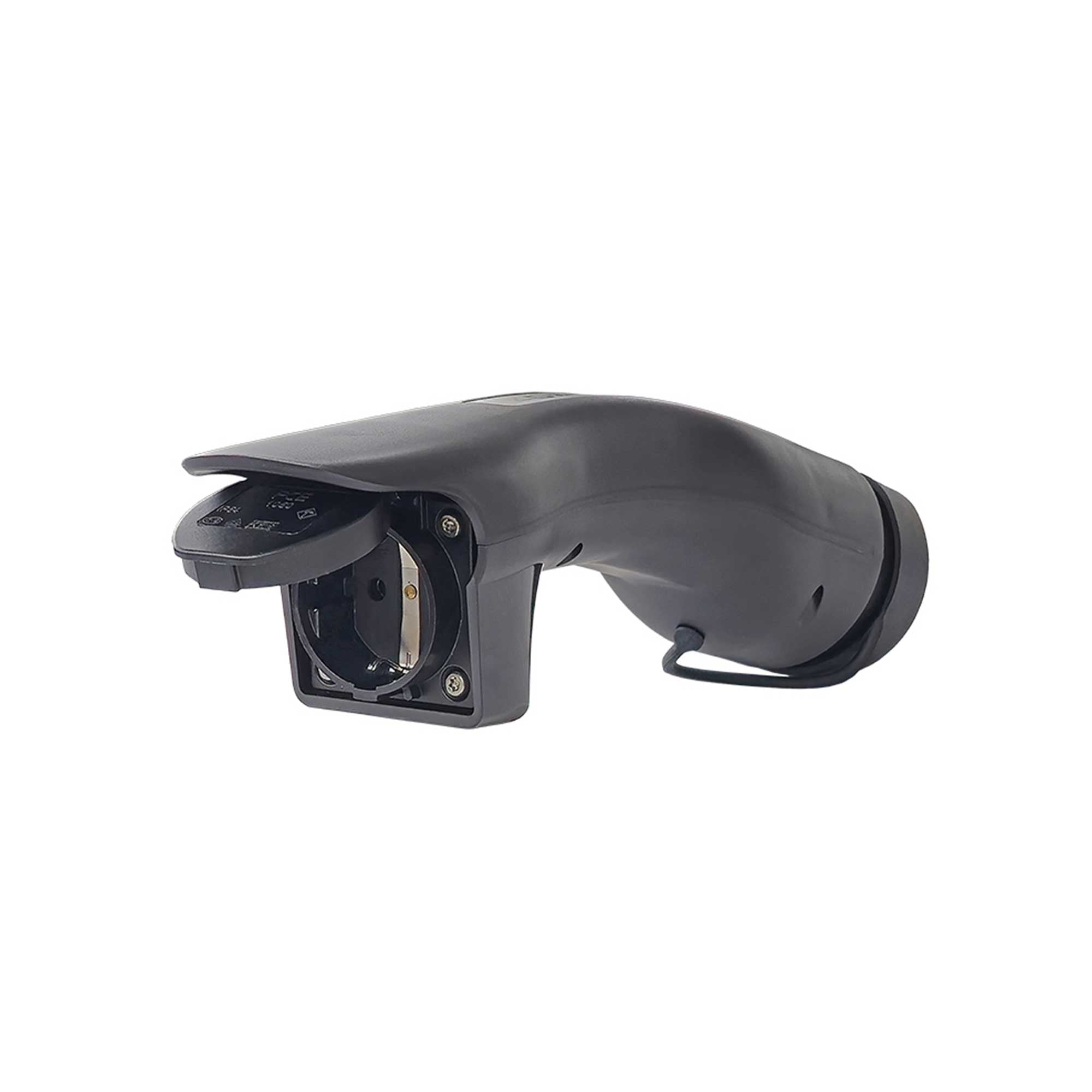
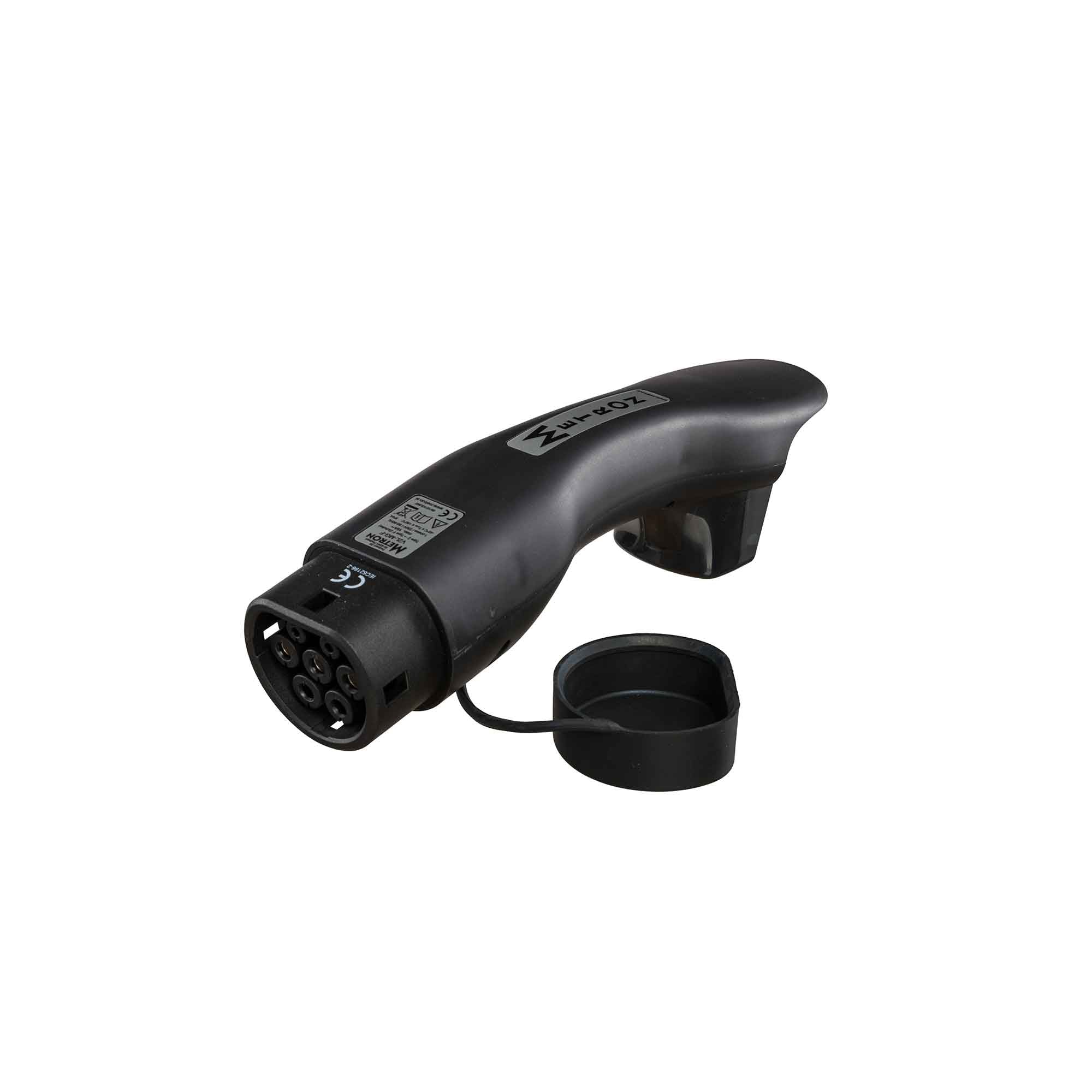
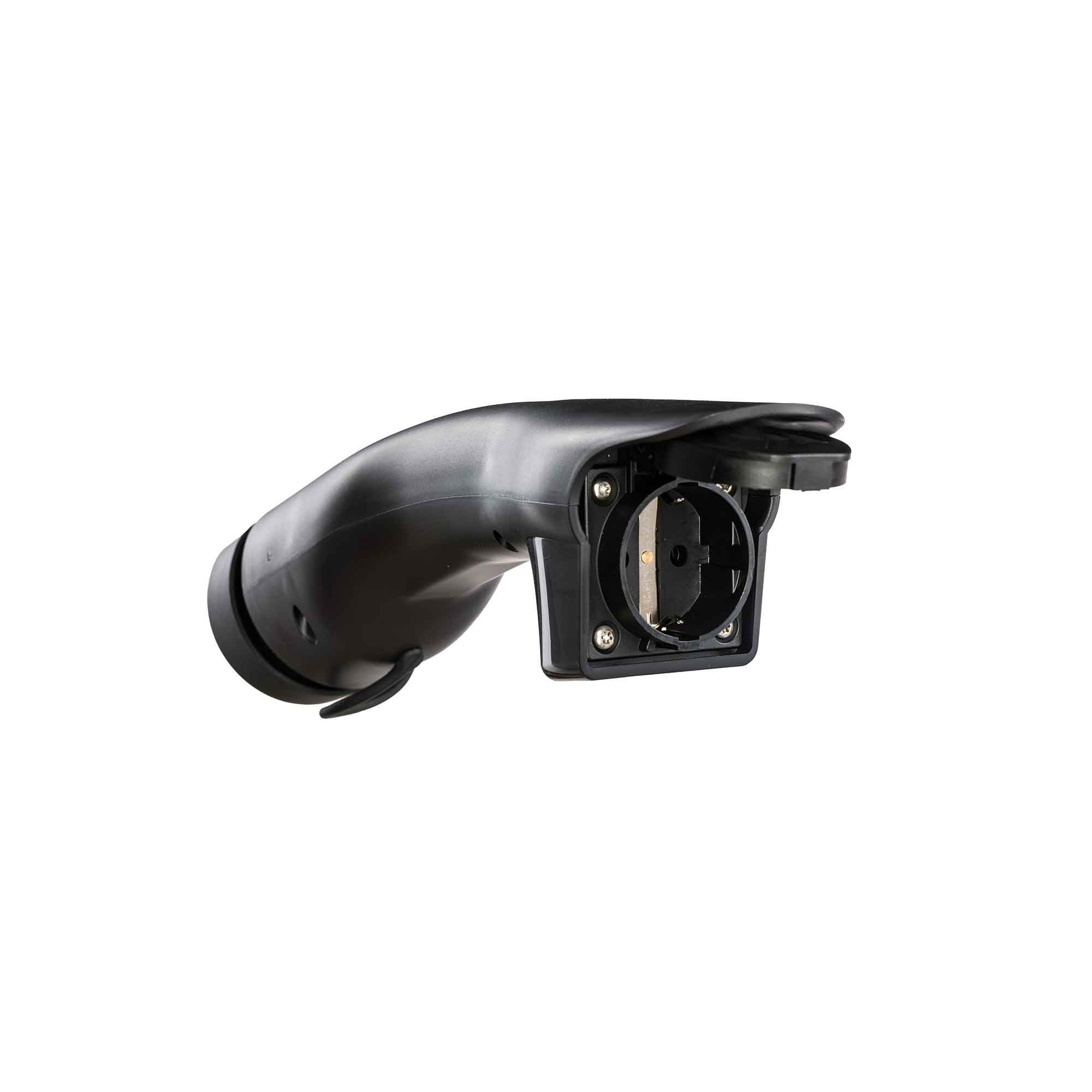
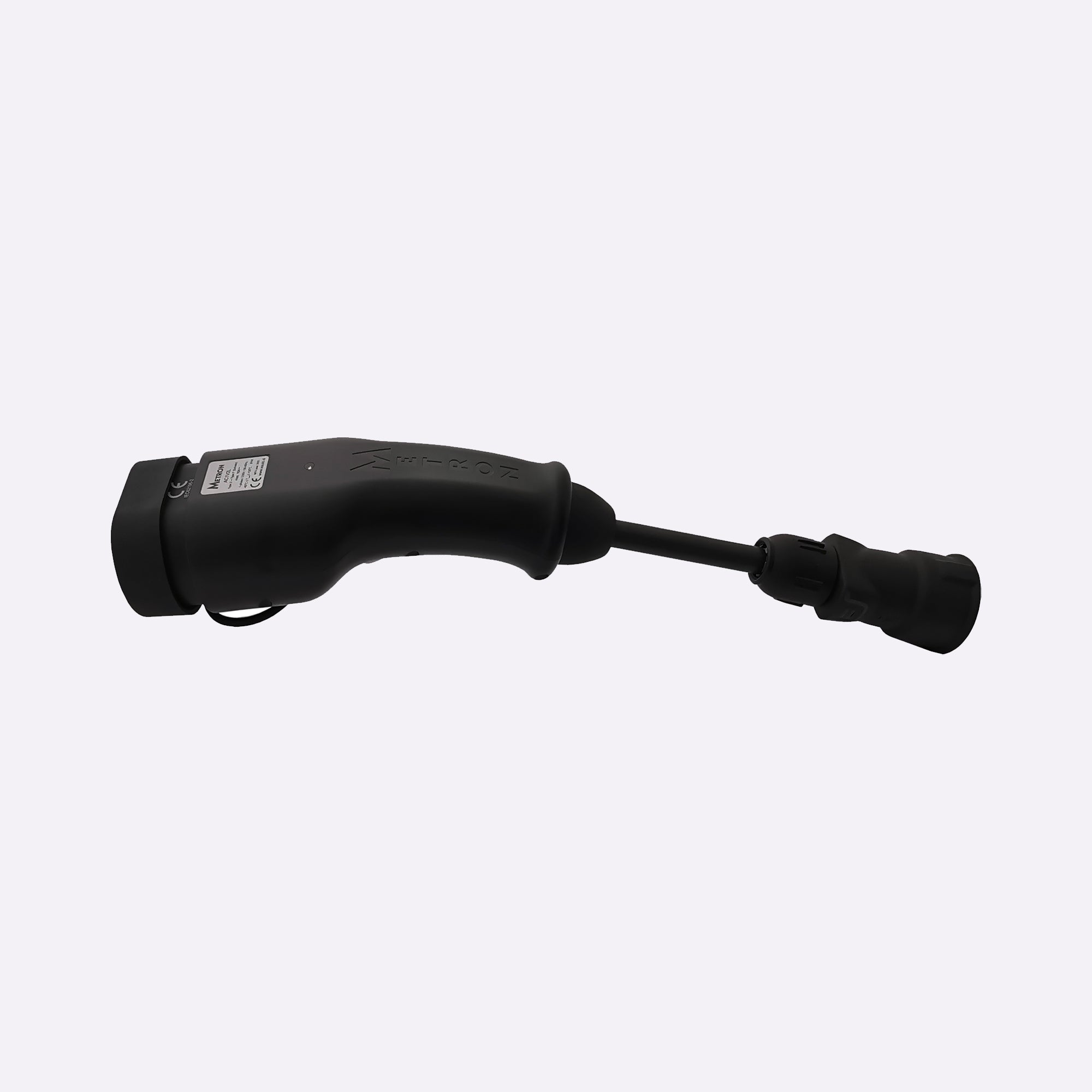
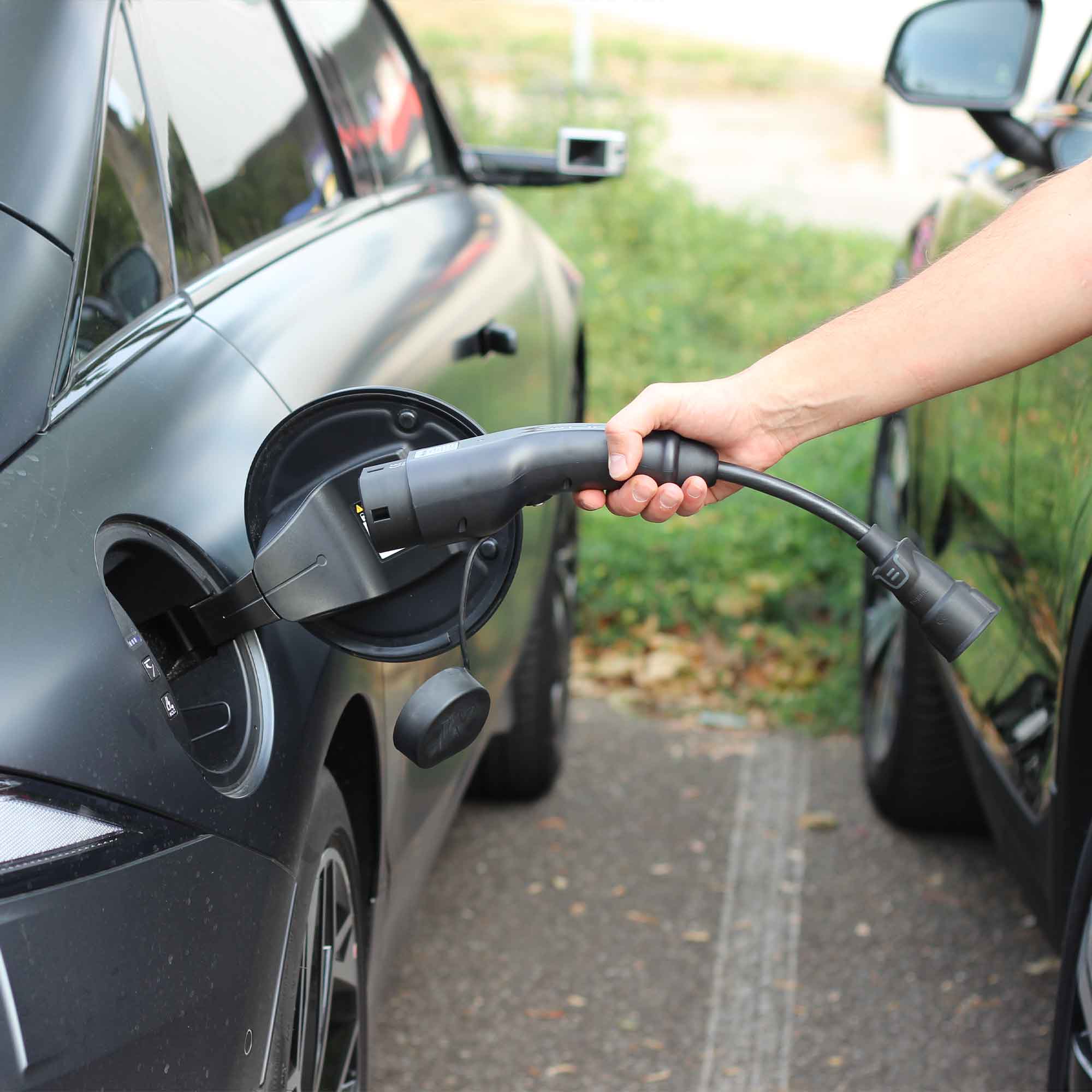

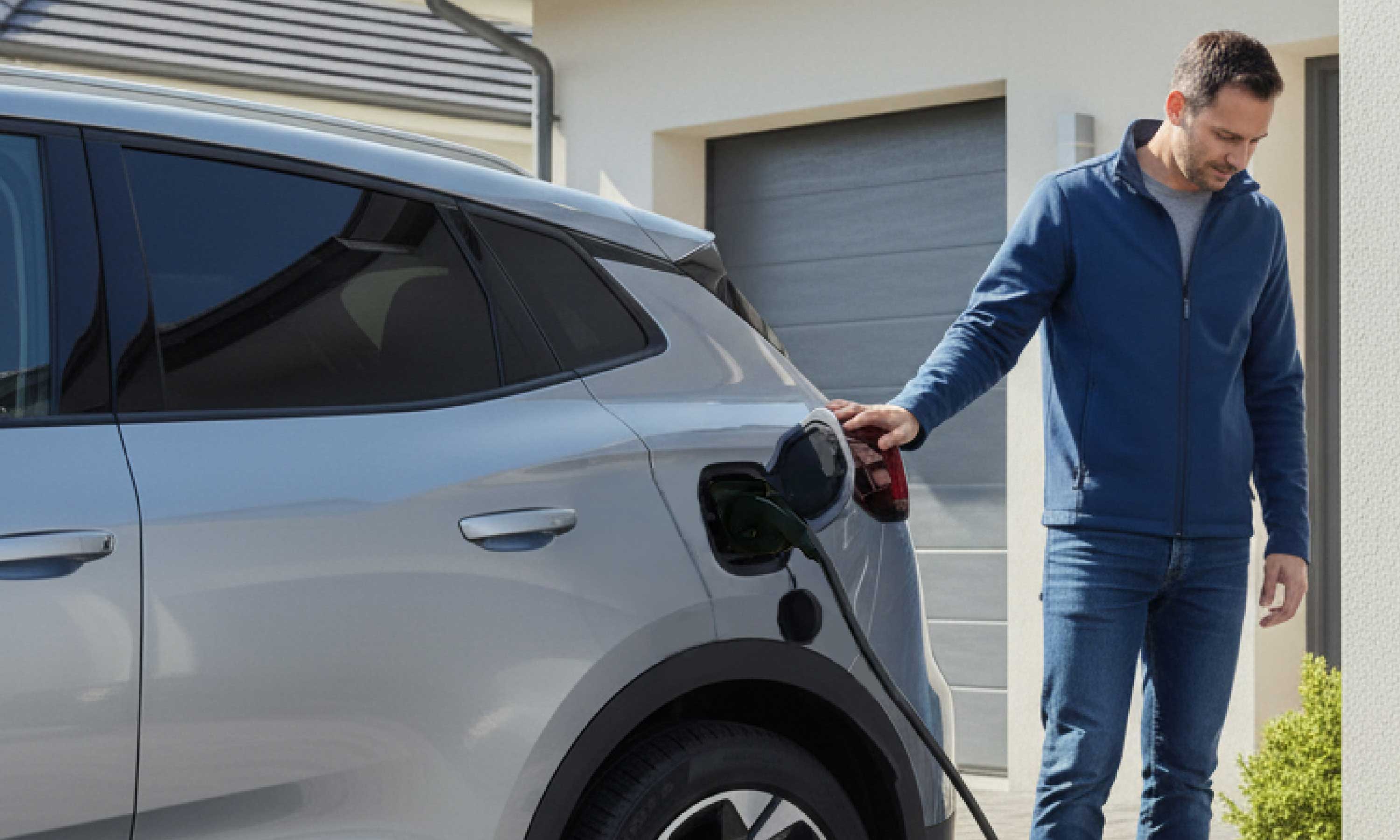
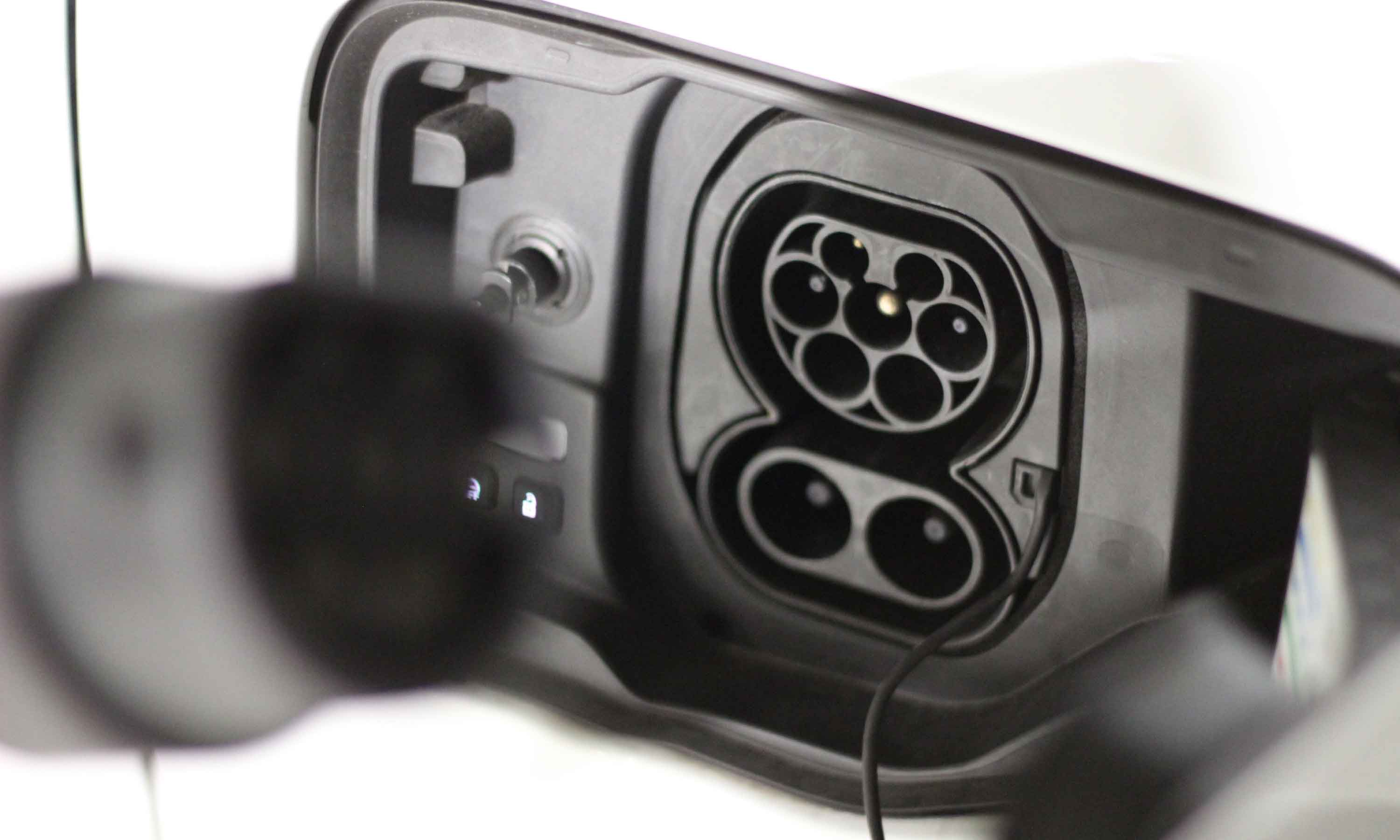
Bonjour,
Vous dites que la Nissan Ariya est compatible V2L.
J’ai une Nissan Ariya 87 kWh Evolve. Pouvez-vous me confirmer qu’elle est bien compatible V2L et avez-vous un adaptateur ?
Bonjour Dominique,
À notre connaissance, la technologie V2L n’est pas disponible pour la Nissan Leaf. Il s’agit de la technologie V2G, mais nous n’avons pas de borne de recharge bidirectionnelle sur notre boutique. Ce produit est encore peu présent sur le marché comme expliqué dans l’article.
L’équipe Mister EV
Bonjour,
Dans la liste des véhicules électriques équipés du V2L de votre article figure la Nissan LEAF.
Propriétaire de ce modele de vehicule, quel équipement existe pour pouvoir utiliser la batterie de la LEAF en domestique?
Merci
Dominique
Bonjour Jean,
Nous n’avons pas d’adaptateur V2L compatible avec les véhicules Tesla. Cette technologie n’est pas encore disponible chez Tesla, mais cela devrait changer dans les années à venir.
Je possède une TESLA modèle 3 peut on utiliser votre adaptateur avec ce modèle de voiture
Leave a comment